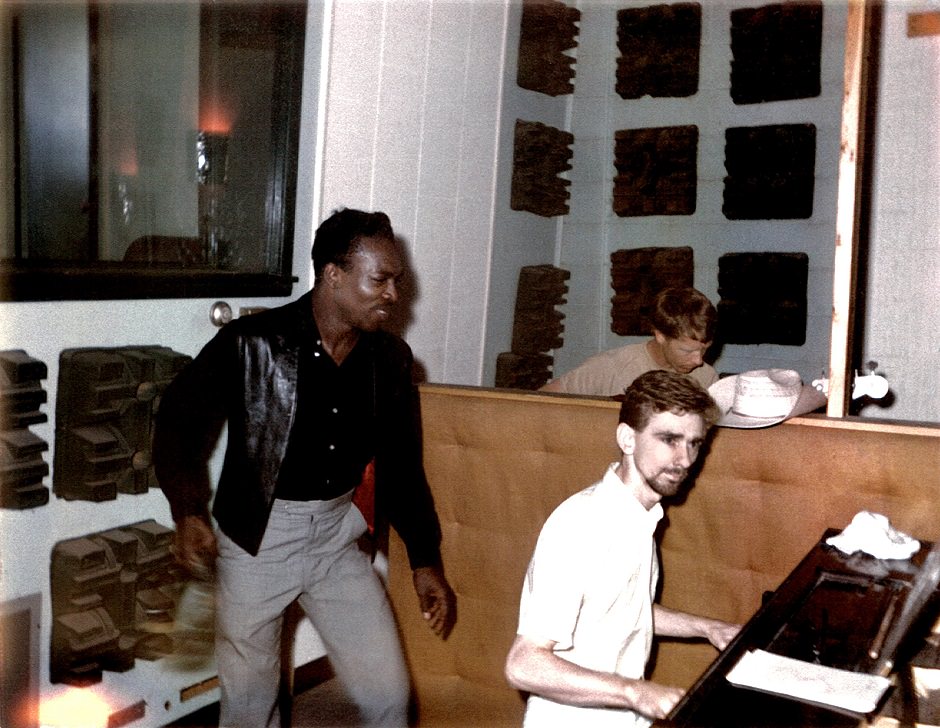The first song you hear in the new documentary Muscle Shoals is Wilson Pickett’s “Land of 1,000 Dances,” a performance as perfect in its raucous abandon as soul music gets. The song’s title is apt. FAME Studios, in Muscle Shoals, Alabama, where Pickett recorded “Dances,” played host to hundreds of performers, drawn by its renowned house band, the Swampers, and its idiosyncratic but skilled owner, Rick Hall. In the film, Pickett recalls being unsettled by an active cotton patch on his way to the studio, a grim reminder of the racial tensions of Alabama in the mid-1960s. But once he gets to FAME, he locks into a groove with the band, and before long, produces “Mustang Sally,” “Funky Broadway,” and of course, “Dances.”
Variations on this tale appear throughout Muscle Shoals—the day Aretha Franklin cut “I Never Loved a Man (The Way I Loved You),” the nights the Allman Brothers Band spent shredding in the studio before being turned away for being too rough around the edges. The film tells the story of how this Alabama town on the Tennessee River became the site of some of the best rock and soul music recordings of the 1960s and 1970s. Along with Pickett and Franklin, Etta James, the Rolling Stones, and Paul Simon recorded some of their best-known songs in Muscle Shoals. It’s where Percy Sledge sang “When a Man Loves a Woman,” where the Staple Singers did “I’ll Take You There,” where, for better or worse, Bob Dylan entered his “Christian period” by recording the album Slow Train Coming.
The obvious question is “Why there?” Though Shoals contains a number of paeans to the spirit of the area, there’s also a more prosaic explanation. Hall, a local music publisher and producer, started FAME Studios and Publishing in nearby Florence, Alabama in 1959, along with Billy Sherrill and Tom Stafford. Hall soon became the sole owner, and, through a combination of skilled recruitment and the luck of chemistry, ended up with an unusually talented set of session musicians, the most famous group of which later became known as the Swampers. The rhythm section of this band—Barry Beckett on keyboards, Roger Hawkins on drums, Jimmy Johnson on guitar, and David Hood on bass—played on most of the tracks recorded at FAME from approximately the mid-1960s until 1969, when they broke with Hall and started their own studio, called Muscle Shoals Sound Studio.
The sound that emerged from this unlikely place—rhythm and blues with a country looseness—made these studios major destinations for artists eager to record somewhere other than the big city music hubs like New York and Memphis. Unlike Booker T and the MGs, the house band at Stax Records, or Motown’s house band, the Funk Brothers, the Swampers weren’t associated with any one label, though many of their classic recordings were done for Atlantic Records through the producer Jerry Wexler. Even as they were forced to adapt to acts ranging from Otis Redding to Bob Seger, what remained consistent in Muscle Shoals recordings was a warmth and brightness, born of the players’ and producers’ familiarity with each other.
The film includes a number of testimonials to the racial harmony fostered in the Muscle Shoals recording studios. Hall, who comes across as a difficult taskmaster with a family history of poverty and tragedy, had a gift for connecting with black recording artists in the still-segregated deep south. The film makes much of the fact that the Swampers, who first became known for their playing on soul records, were a bunch of Southern white boys. Jimmy Johnson recalls Paul Simon asking Stax Records for “those same black players that played on ‘I’ll Take You There’” and being told he could have them, though he should know they were “mighty pale.” But the film’s director, Greg “Freddy” Camalier, avoids more difficult questions about race that could have been addressed here. Somehow, despite the on-screen presence of Mick Jagger and Keith Richards, no one gets around to asking about the slave-fetishizing content of “Brown Sugar,” perhaps the most famous song recorded at Muscle Shoals Sound Studio. Nor does anyone care to touch the racial complications of the Southern populism represented by Lynyrd Skynyrd, who made their earliest recordings at Muscle Shoals Sound, and are featured in the film playing in front of a massive Confederate flag.
As a film, Shoals is hampered by a lack of clarity about the studio’s history, and there is an over-reliance on commentary by platitude-spouting rock stars (particularly Bono). It understandably breezes quickly through the music made in Muscle Shoals after the early seventies, when the Swampers turned to, among other things, progressive rock with the band Traffic, and FAME stayed solvent by recording the Osmonds and other more commercial acts. But the film’s great virtue is that it will introduce and remind viewers of the wonderfully varied trove of music that came out of these studios, from Arthur Alexander’s “You Better Move On,” the first hit recorded at FAME, to Bob Dylan’s “Pressing On,” a beautiful gospel song sung here by Alicia Keys and backed by the Swampers, with Rick Hall producing. The Keys session is the last scene in the film—the old band reunited with their first boss, brought back together by the chance to record one more good tune.
Advertisement
Muscle Shoals is available on DVD and iTunes.



